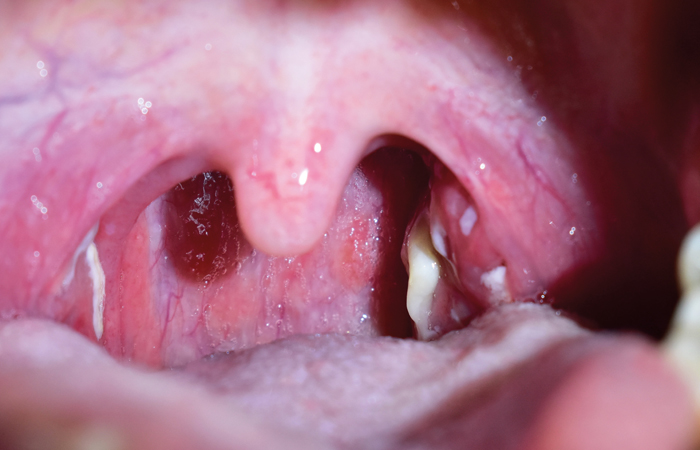Clinical pathways
When the pharmacist sees a patient presenting with signs and symptoms of acute sore throat for the Pharmacy First service, the clinical pathway starts with first considering the risk of deterioration or serious illness and, if necessary, signpost them to A&E or call 999 in a life threatening emergency.
If the patient does not have these risks then the pharmacist will next check if they have signs or symptoms indicating possible scarlet fever, quinsy or glandular fever; signs and symptoms of suspected cancer; or whether the patient is immunosuppressed. If yes, the pharmacist will refer them to their GP or other healthcare provider as appropriate.
If the patient does not have these risks then the pharmacist will use the FeverPAIN Score to assess if they have fever (over 38°C), purulence (the formation of pus); whether this is their first attendance within three days after the onset of symptoms; if they have severely inflamed tonsils; and if they have no cough or coryza (cold symptoms) – giving one point for each.
Antibiotics are not needed for patients with a FeverPAIN Score of 0 or 1, who will be recommended self care and pain relief, as well as OTC treatments for symptomatic relief, and advised to drink adequate fluids. The pharmacist will also ask the patient to come back to the pharmacy after one week if there is no improvement so they can reassess them.
Self care and pain relief are also recommended for patients with a FeverPAIN score of 2 or 3, with the assurance that antibiotics make little difference to how long symptoms last, and withholding antibiotics is unlikely to lead to complications. The pharmacist will ask the patient to come back to the pharmacy if there’s no improvement within three to five days for reassessment, at which point they can be offered antibiotics if appropriate. Patients with a FeverPAIN score of 4 or 5 with mild symptoms will be advised to consider pain relief and self care as first line treatment, and also be told to return to the pharmacy for reassessment if there is no improvement within three to five days. Those with severe symptoms will be offered an immediate antibiotic, with onward referral to the GP or other healthcare provider if their symptoms have not improved after completion of the treatment course.
Pharmacy teams can assure all patients that they will be referred on to their GP if their symptoms worsen rapidly or significantly at any time, and that the pharmacist will be able to give them self-care and safety netting advice using TARGET respiratory tract infection (RTI) leaflets during the consultation.

The throat and tonsils may appear red and sore and there may even be pus.
